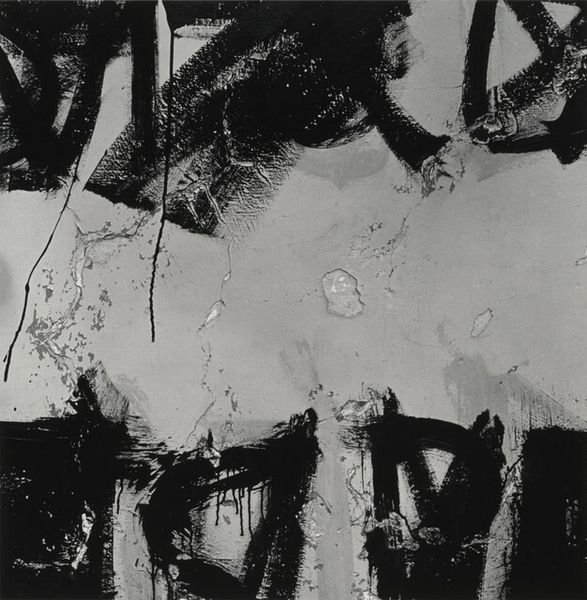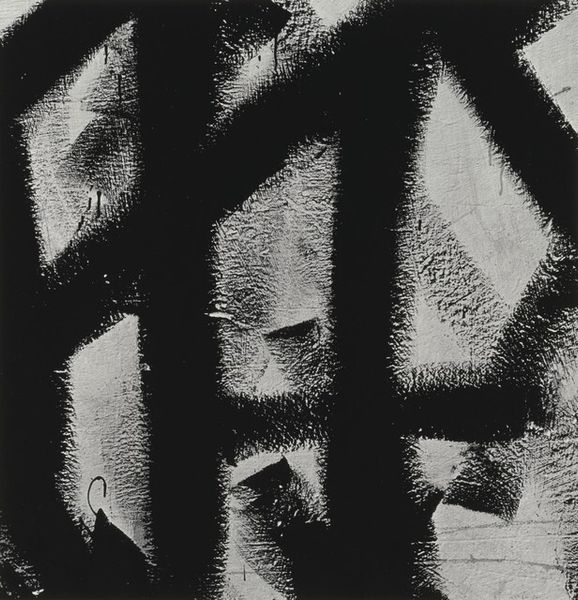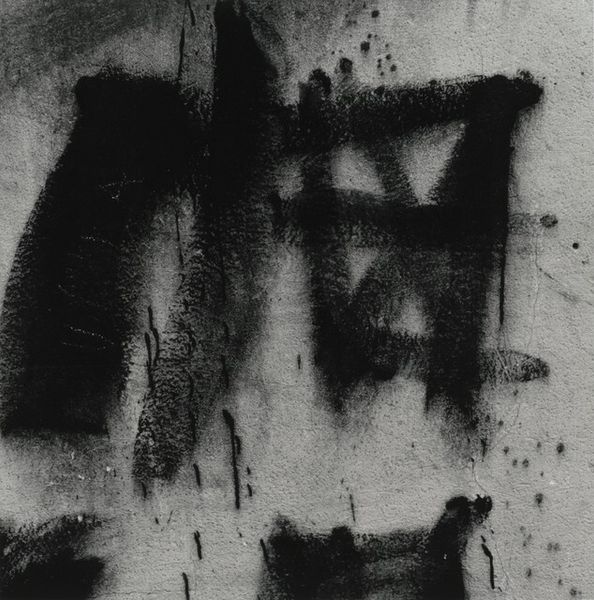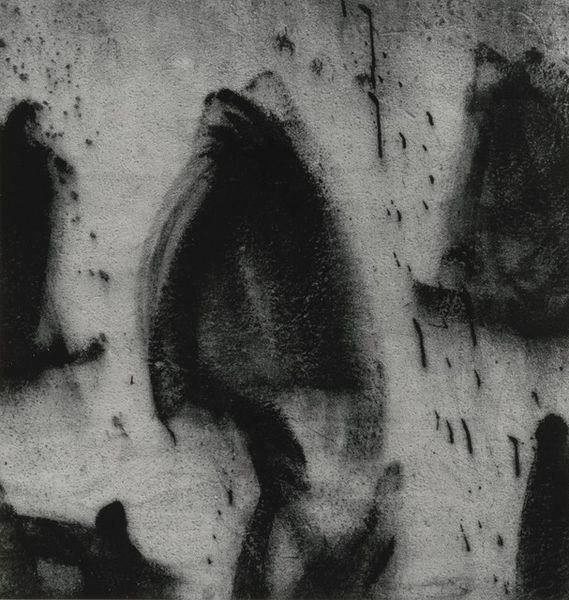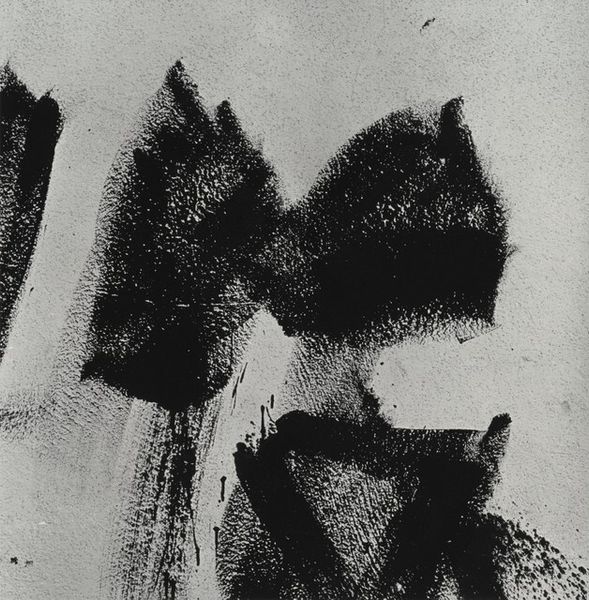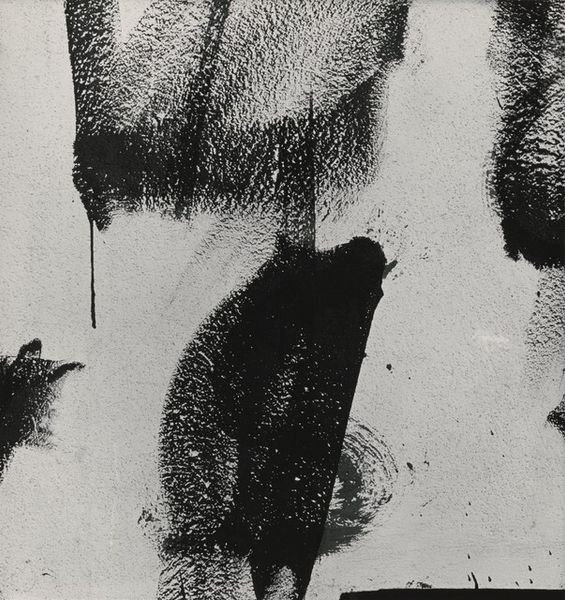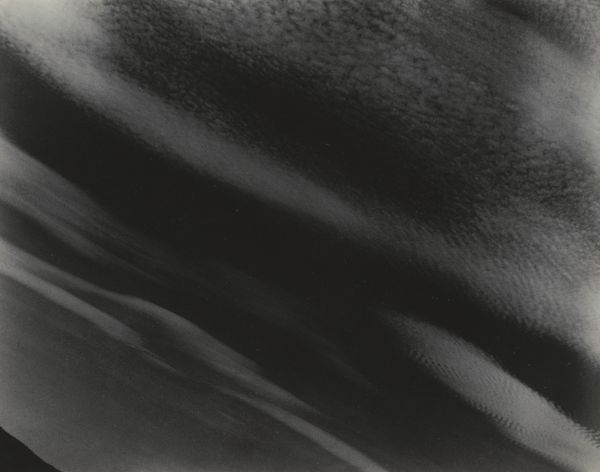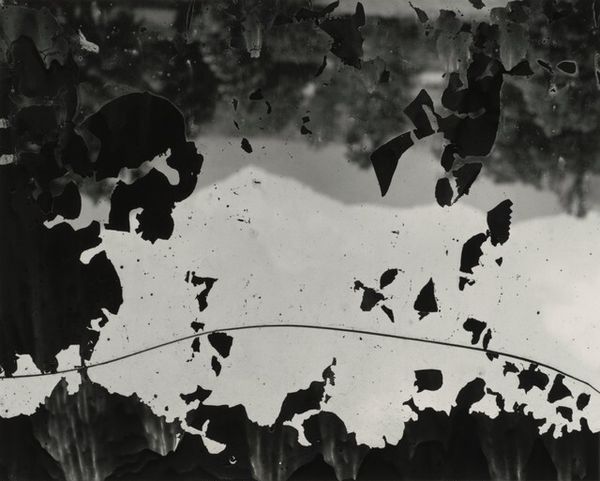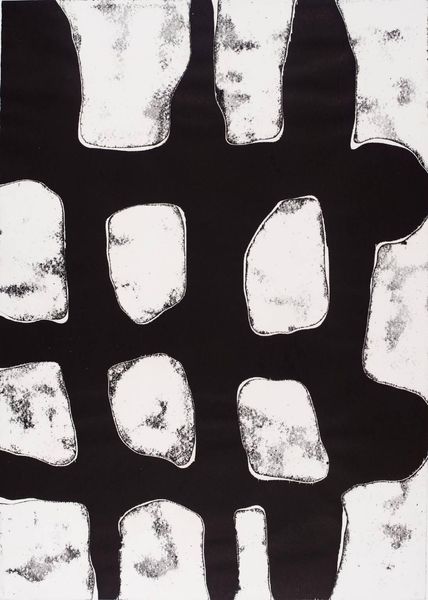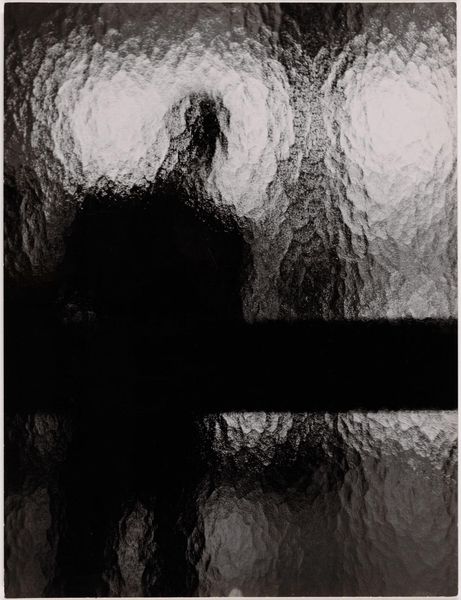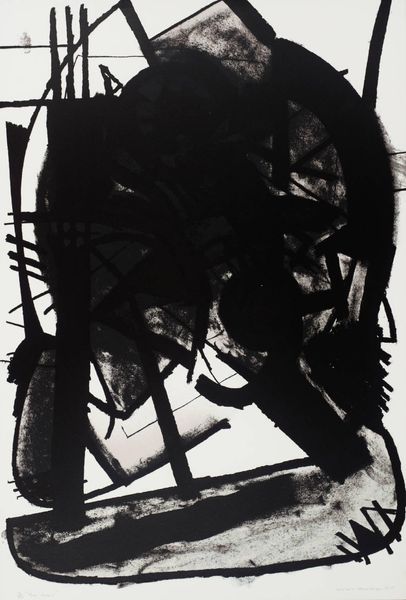
Dimensions: image: 24.8 × 24.9 cm (9 3/4 × 9 13/16 in.) sheet: 35.4 × 27.7 cm (13 15/16 × 10 7/8 in.)
Copyright: National Gallery of Art: CC0 1.0
Editor: Here we have Aaron Siskind's "Rome 67 (Homage to F.K.)" from 1973, a gelatin silver print. I am immediately drawn to the texture, that grainy, almost tactile feel of the concrete, contrasted against the smooth, sweeping curves of the painted lines. What stands out to you in this photograph? Curator: I see a record of process, labor, and ultimately, urban consumption. Think about the material conditions: a wall, likely publicly owned, then painted, layered with graffiti, and captured via photographic print. This "high art" image is utterly reliant on those less-respected interventions and the industrial production of the materials. Editor: That’s a really interesting way to look at it. So, are you saying that Siskind’s choice to photograph something like graffiti on a wall is itself a statement? Curator: Precisely! Siskind elevates something typically disregarded as vandalism, tracing evidence of mark-making, essentially labor, on an urban surface. Furthermore, think about the political undertones; graffiti is often a form of protest, a visual manifestation of societal discontent painted onto public spaces. How does the act of photographing it shift its meaning or accessibility? Editor: I hadn't considered the aspect of elevating the discarded, of using what's readily available. So much street art employs exactly those elements. And that links back to the title, "Homage to F.K.," potentially referencing Franz Kline and his abstract expressionist paintings. It becomes this cycle of influence. Curator: Exactly! The high art and the so-called low art are interdependent, influencing each other through their materials, techniques and visibility within urban culture. What started as a defacement now resides within the context of fine art. The act of taking the photo reframes not just the wall, but the viewer’s own understanding of cultural and artistic boundaries. Editor: I'm really starting to understand the conversation about material conditions that the photo is trying to present. I’ll definitely look at art differently now, paying closer attention to production processes!
Comments
No comments
Be the first to comment and join the conversation on the ultimate creative platform.
